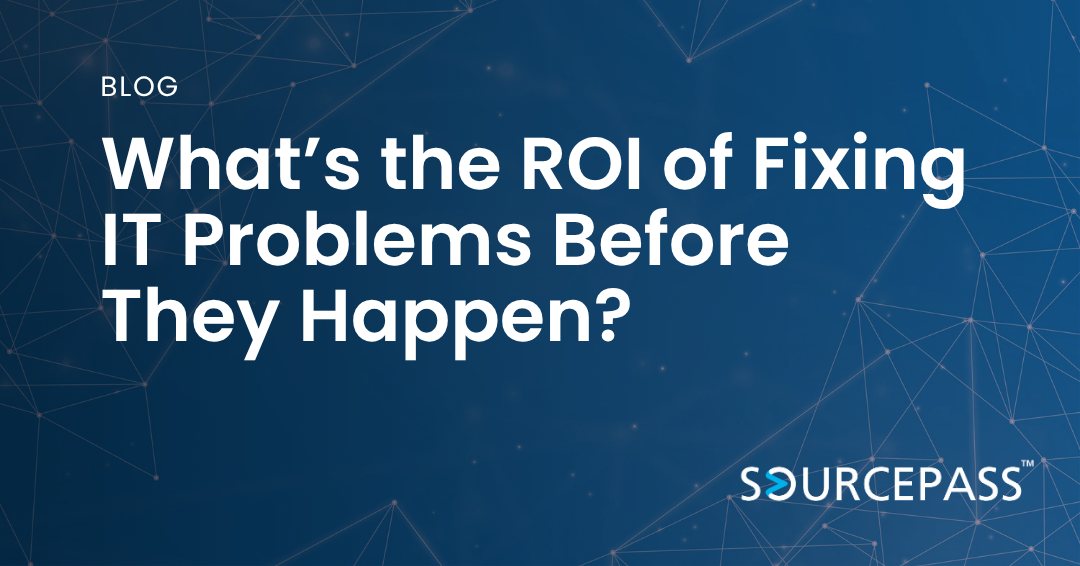What’s the ROI of Fixing IT Problems Before They Happen?
Jun 23, 2025 Alex Davis Costs & Budget 2 min read



For many business leaders, IT feels like a black hole of unexpected costs—systems crash, files go missing, employees get locked out, and the only solution seems to be calling in support after something breaks. This reactive approach may feel cheaper in the short term, but it comes with hidden expenses that silently drain your budget and productivity.
On the flip side, a proactive IT strategy—where systems are monitored, updated, and optimized regularly—delivers measurable returns. From reducing downtime and security incidents to improving employee experience and operational continuity, proactive IT pays off in both dollars and business performance.
So what’s the real ROI of fixing IT problems before they happen? Let’s break it down.
Reactive vs. Proactive IT: What’s the Difference?
|
Reactive IT |
Proactive IT |
|
Waits for something to break |
Prevents issues through monitoring & updates |
|
Unpredictable costs |
Predictable monthly investment |
|
Slower response times |
Faster resolution through automation & oversight |
|
Greater risk of data loss or security gaps |
Regular patching and risk assessments |
|
Lower employee satisfaction |
Smoother experience and reduced tech frustration |
The Real Cost of IT Problems
IT problems don’t just disrupt technology—they slow down your entire organization. Consider:
- Downtime: Even 1 hour of downtime for a 20-person team costs over $2,000 in lost productivity.
- Security Incidents: The global average cost of a data breach in 2024 was $4.9M, a 10% increase over 2023. (IBM, 2024).
- Turnover: Employees leave when poor tech slows them down or increases stress—replacing one staff member can cost 50-100% of their salary.
- Compliance Fines: Failing to maintain HIPAA, GDPR, or PCI compliance can result in five- or six-figure penalties.
The Financial ROI of Proactive IT
Let’s say your company experiences two significant IT outages per year, each lasting three hours and impacting 15 employees:
- Downtime cost per incident: 15 employees × $50/hr avg rate × 3 hours = $2,250
- Annual downtime cost (2 incidents): $4,500
- Add in one phishing attack cleanup: Estimated at $15,000
- Total reactive cost annually: $19,500+
Now compare that to a proactive IT support plan at $2,000/month ($24,000/year), which includes:
- 24/7 monitoring and alerts
- Regular security patching and updates
- Helpdesk support and user onboarding/offboarding
- Strategic IT planning and compliance support
Savings potential: If that $24,000 plan prevents even one major breach or outage, it pays for itself. And the operational benefits—like smoother collaboration, fewer interruptions, and better morale—continue to compound.
Operational ROI: Beyond Dollars
While financial ROI is important, the operational gains of proactive IT are equally valuable:
- Employee productivity: Less time waiting on support or troubleshooting tools
- Customer satisfaction: Fewer service delays, errors, or miscommunications
- Scalability: Systems that grow with your business without constant rebuilding
- Strategic focus: Your team can spend less time firefighting and more time building
Try the ROI of IT Calculator
Here’s a simple formula to estimate your own potential ROI from switching to proactive IT:
- Annual downtime cost = # of downtime incidents × avg duration × # of affected employees × avg hourly wage
- Incident response cost = Total spent on breach response, compliance audits, or emergency fixes
- Employee time saved = Hours of productivity regained × employee hourly wage
- Annual proactive IT investment = Quote from your managed service provider (MSP)
ROI = (Downtime cost + incident cost + time saved) - proactive IT investment
Final Thought: Prevention is Cheaper Than Recovery
The ROI of proactive IT isn’t hypothetical—it’s real, measurable, and growing more critical every year. As businesses become more dependent on technology for daily operations, the cost of reacting to problems after they occur will only rise.
By investing in a proactive IT approach now, you reduce risk, reclaim productivity, and create a more secure, scalable technology environment for your business to thrive.
Ready to calculate your own IT ROI?
Talk to our team for a free consultation and customized cost-savings projection. Find out what your current IT approach is really costing you—and how much you could save.
Subscribe To
Sourcepass Insights
Sourcepass Insights
Stay in the loop and never miss out on the latest updates by subscribing to our newsletter today!
.png?width=500&height=100&name=White%20Logo%20-%20Transparent%20Tag%20(3).png)



